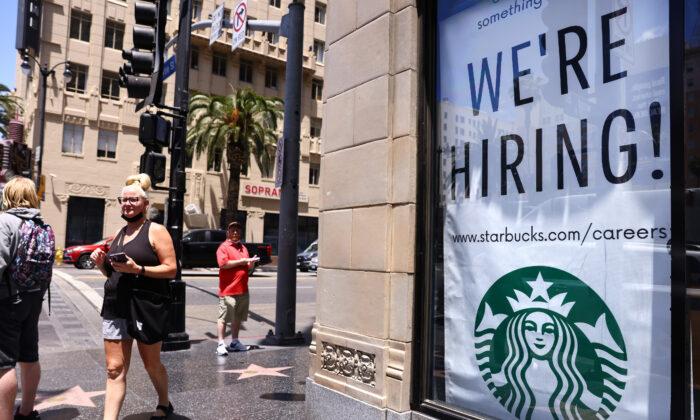The number of American workers who filed for unemployment rose last week after touching a pandemic-era low in the prior week, with the spread of the Delta variant and supply chain issues weighing on the labor market recovery.
“On the face of it, it is disappointing but not entirely surprising to see a slight increase in new jobless claims given the toll taken by the Delta variant. Countering that somewhat is the decline in continuing claims to a fresh pandemic era low,” Bankrate senior economic analyst Mark Hamrick told The Epoch Times in an emailed statement.
Continuing claims, which run a week behind the headline number and represent people continuing to collect benefits after earlier making an initial filing, fell by 187,000 to 2,665,000, a pandemic-era low.
“The good news for American workers is that fresh job losses remain relatively muted. There’s strong demand for workers across a wide variety of sectors, lending to job and income security,” Hamrick said.
The jobless claims data comes as investors look to next week’s Federal Reserve policy meeting that could provide clues as to the timeline for the central bank to begin paring back its massive bond-buying program. Fed officials have been discussing when to start tapering the Fed’s $120 billion in monthly Treasury and mortgage security purchases, with the labor market recovery a key touchstone. While tapering is expected to start this year, the timing of the announcement, as well as the pace of the wind-down, hasn’t yet been settled.
“The supply issues are due to a myriad of factors, but first and foremost is people, whether they’re worried about their children or elder care, or they’re fearful to go back into the workplace or to get on mass transit in major cities to get to the workplace,” Harker said.
He told the outlet that he favors moving quickly toward a taper announcement.
“I am supportive of moving toward a tapering process sooner rather than later. When exactly that happens, the committee needs to decide. I would hope sometime this year we would be able to start the tapering process,” Harker said, referring to the Federal Open Market Committee (FOMC), the Fed’s monetary policy setting body, which is scheduled to meet on Sept. 21-22.





